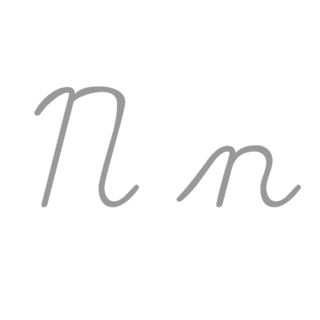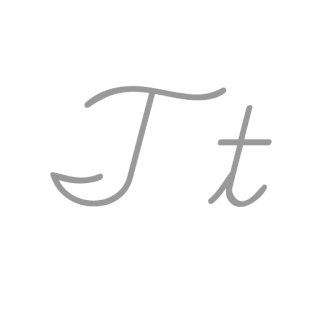
An alphabet is a standard set of letters that represent the phonemes of any spoken language used for its written form. This is in contrast to other types of writing systems, such as syllabaries and logographic systems.

The Cyrillic script is a writing system used for various languages across Eurasia and is used as the national script in various Slavic-, Turkic- and Persian-speaking countries in Eastern Europe, the Caucasus, Central Asia, and Northern Asia.

In articulatory phonetics, a consonant is a speech sound that is articulated with complete or partial closure of the vocal tract. Examples are, pronounced with the lips;, pronounced with the front of the tongue;, pronounced with the back of the tongue;, pronounced in the throat; and, pronounced by forcing air through a narrow channel (fricatives); and and, which have air flowing through the nose (nasals). Contrasting with consonants are vowels.
The International Phonetic Alphabet (IPA) is an alphabetic system of phonetic notation based primarily on the Latin alphabet. It was devised by the International Phonetic Association in the late 19th century as a standardized representation of the sounds of spoken language. The IPA is used by lexicographers, foreign language students and teachers, linguists, speech-language pathologists, singers, actors, constructed language creators and translators.

The Latin or Roman alphabet is the writing system originally used by the ancient Romans to write the Latin language.

N or n is the fourteenth letter in the modern English alphabet and the ISO basic Latin alphabet. Its name in English is en, plural ens.
A phoneme is a unit of sound that distinguishes one word from another in a particular language.

T or t is the 20th letter in the modern English alphabet and the ISO basic Latin alphabet. Its name in English is tee, plural tees. It is derived from the Semitic letter taw via the Greek letter tau. In English, it is most commonly used to represent the voiceless alveolar plosive, a sound it also denotes in the International Phonetic Alphabet. It is the most commonly used consonant and the second most common letter in English-language texts.
Transliteration is a type of conversion of a text from one script to another that involves swapping letters in predictable ways.
The Old Italic scripts are a set of similar ancient writing systems used in the Italian Peninsula between about 700 and 100 BCE, for various languages spoken in that time and place. The most notable member is the Etruscan alphabet, which was the immediate ancestor of the Latin alphabet currently used by English and many other languages of the world. The runic alphabets used in northern Europe are believed to have been separately derived from one of these alphabets by the 2nd century AD.

The Phoenician alphabet is an alphabet of abjad type, consisting of 22 consonant letters only, leaving vowel sounds implicit, although certain late varieties use matres lectionis for some vowels.

Kazakh or Kazak, is a Turkic language of the Kipchak branch spoken in Central Asia. It is closely related to Nogai, Kyrgyz and Karakalpak. Kazakh is the official language of Kazakhstan and a significant minority language in the Ili Kazakh Autonomous Prefecture in Xinjiang, China and in the Bayan-Ölgii Province of Mongolia. Kazakh is also spoken by many ethnic Kazakhs through the former Soviet Union, Germany, Iran, Turkey and Afghanistan.
Rotokas is a North Bougainville language spoken by about 4,320 people on the island of Bougainville, an island located to the east of New Guinea which is part of Papua New Guinea. According to Allen and Hurd (1963), there are three identified dialects: Central Rotokas, Aita Rotokas, and Pipipaia; with a further dialect spoken in Atsilima (Atsinima) village with an unclear status. Central Rotokas is most notable for its extremely small phonemic inventory and for having perhaps the smallest modern alphabet.
The modern Rotokas alphabet is a Latin alphabet consisting of only 12 letters of the ISO basic Latin alphabet without diacritics:
The alveolar nasal is a type of consonantal sound used in numerous spoken languages. The symbol in the International Phonetic Alphabet that represents dental, alveolar, and postalveolar nasals is ⟨n⟩, and the equivalent X-SAMPA symbol is n.
The Greek alphabet has been used to write the Greek language since the late ninth or early eighth century BC. It is derived from the earlier Phoenician alphabet, and was the first alphabetic script in history to have distinct letters for vowels as well as consonants. In Archaic and early Classical times, the Greek alphabet existed in many different local variants, but, by the end of the fourth century BC, the Euclidean alphabet, with twenty-four letters, ordered from alpha to omega, had become standard and it is this version that is still used to write Greek today. These twenty-four letters are: Α α, Β β, Γ γ, Δ δ, Ε ε, Ζ ζ, Η η, Θ θ, Ι ι, Κ κ, Λ λ, Μ μ, Ν ν, Ξ ξ, Ο ο, Π π, Ρ ρ, Σ σ/ς, Τ τ, Υ υ, Φ φ, Χ χ, Ψ ψ, and Ω ω.

The North Bougainville or West Bougainville languages are a small language family spoken on the island of Bougainville in Papua New Guinea. They were classified as East Papuan languages by Stephen Wurm, but this does not now seem tenable, and was abandoned in Ethnologue (2009).

Latin or Roman script is a set of graphic signs (script) based on the letters of the classical Latin alphabet. This is derived from a form of the Cumaean Greek version of the Greek alphabet used by the Etruscans. Several Latin-script alphabets exist, which differ in graphemes, collation and phonetic values from the classical Latin alphabet
The Serbian Cyrillic alphabet is an adaptation of the Cyrillic script for Serbo-Croatian, developed in 1818 by Serbian linguist Vuk Karadžić. It is one of the two alphabets used to write standard modern Serbian, Bosnian and Montenegrin, the other being Latin.








